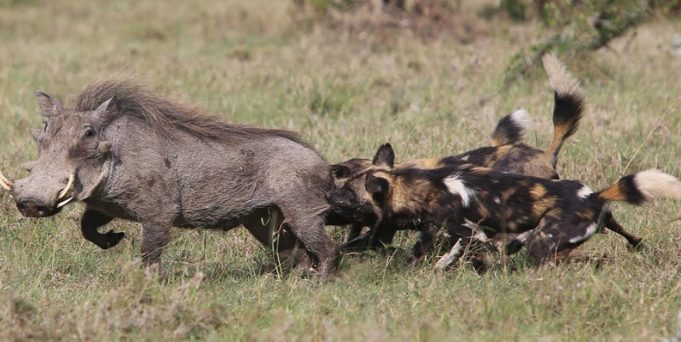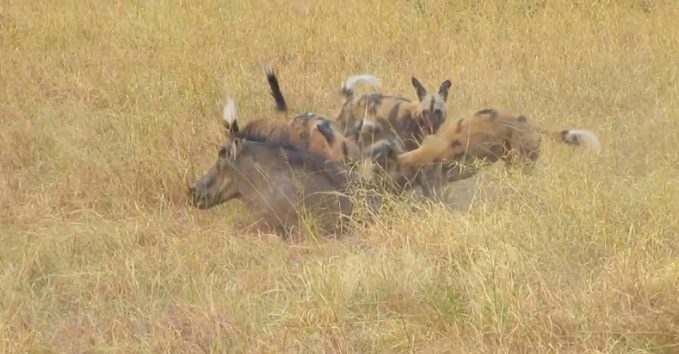In packs of African wild dogs, a monogamous breeding pair often holds the leadership position. The entire pack takes care of the female’s litter of puppies, which can range in size from two to twenty. These canines are exceedingly gregarious, and groups have been observed helping weak or ill members and sharing food. Dogs frequently interact with one another and communicate by using touch, body language, and vocalizations.
Their ability to cover great distances quickly and without exerting a lot of energy is essential to their principal ʜᴜɴᴛing strategy. They are taller than one might initially guess, yet because of their slim build, they weigh surprisingly little.

How they interact with one another is significantly influenced by ʜᴜɴᴛing. Compared to other African predators, wild dogs are master ʜᴜɴᴛers with better success rates. They employ complex flanking and chasing techniques, one of which involves switching off as to who leads the pursuit while others wait. They can therefore run for tens of kilometers without getting tired. Wild canines are well known for beginning to consume their prey while it is still alive.

Although it may appear cruel, this is really done to give them a better opportunity of feeding before larger predators chase them away from their meal. Wild dogs are territorial animals. The dominant breeding pair is in charge of drawing lines around the territory of the pack by defecating and peeing there and leaving behind aromas that other wild dogs can recognize.
Let’s Watch Pack Of Wild Dogs Successfully ʜᴜɴᴛ A Warthog in the video below:
Source: https://dailylifeworld.com








